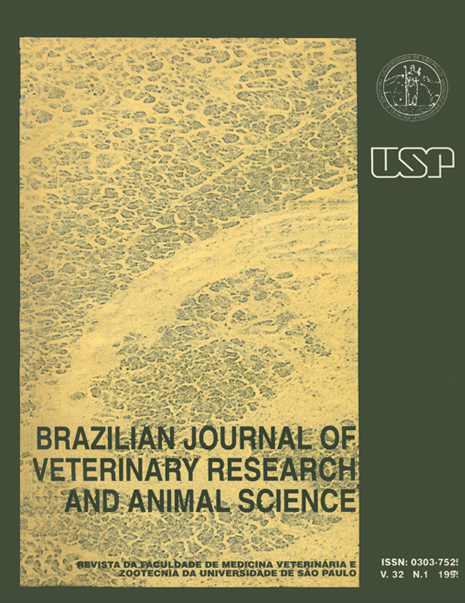Differences in the acquired resistance of dogs, hamsters, and guinea pigs to repeated infestations with adult ticks Rhipicephalus sanguineus (Acari: Ixodidae)
DOI:
https://doi.org/10.11606/issn.1678-4456.bjvras.1994.52089Keywords:
Rhipicephalus sanguineus, Resistance, Dogs, Hamsters, Guinea pigs, MetastigmataAbstract
Tick-bite naive experimental groups of dogs, hamsters and guinea pigs were infested three times with adult ticks Rhipicephalus sanguineus and the acquired resistance, based on the variation of some biological parameters of the female tick was compared. The results showed that hamsters and mainly guinea pigs develop a very efficient immunity to this tick species as demonstrated by a very significant drop in the efficiency rate of female ticks in converting their food reservoir to eggs and larvae from the first to the second and third infestations. At the same time, dogs were unable to display such a resistance. Female tick performance was similar throughout the infestations in this host; there was even a tendency of improvement of the performance with the succession of infestations. These results underline the need of comparative studies on the acquired resistance to ticks involving natural and unnatural hosts as a way of putting in evidence defence mechanisms which might be altered or hidden in natural host - parasite relationships.
Downloads
Downloads
Published
Issue
Section
License
The journal content is authorized under the Creative Commons BY-NC-SA license (summary of the license: https://





